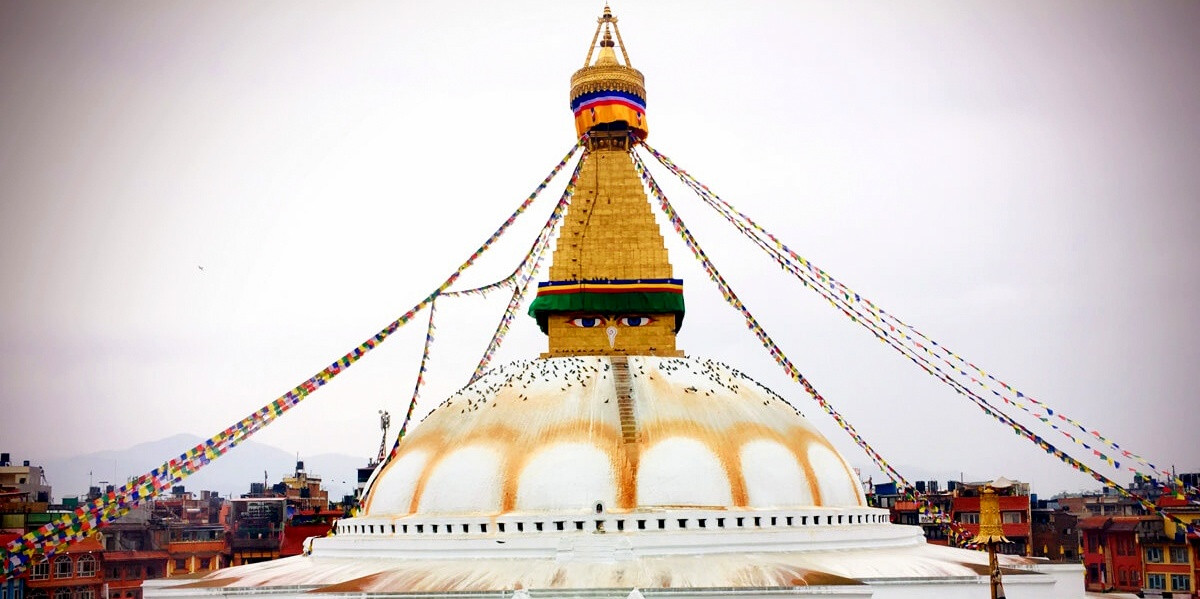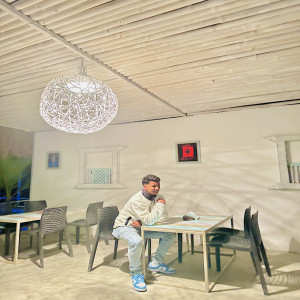Wildlife Safaris
Wildlife safari in Nepal offers a unique opportunity to witness some of Asia's most fascinating animals in their natural habitats. Here’s an in-depth look at what you can expect from a wildlife safari in Nepal:
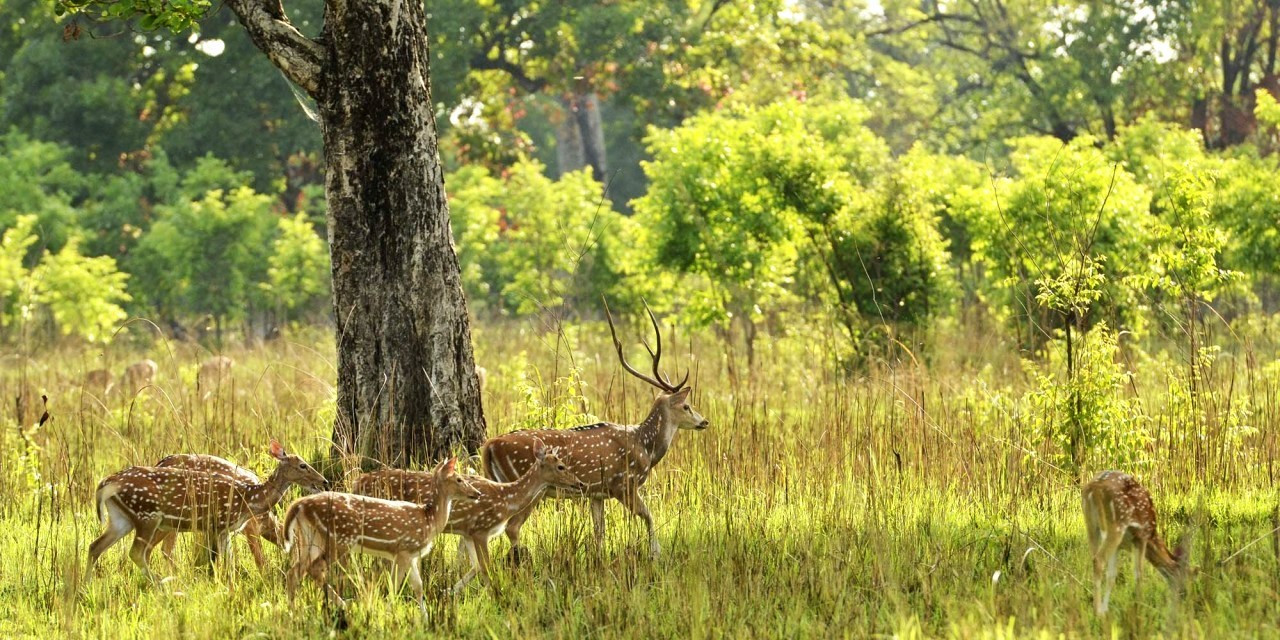
Key Destinations for Wildlife Safaris in Nepal
Chitwan National Park: Located in the Terai region, Chitwan is Nepal's first national park and a UNESCO World Heritage site. It is renowned for its dense forests and grasslands, which are home to an impressive array of wildlife. Visitors can spot the endangered one-horned rhinoceros, Bengal tigers, elephants, and several species of deer. Bird watchers will also be delighted by the over 500 species of birds in the park. Jeep safaris, canoe rides, and guided jungle walks offer various ways to explore this vibrant ecosystem.
Bardia National Park: This is the largest and most undisturbed wilderness area in Nepal's Terai. It provides an excellent habitat for endangered animals like the Royal Bengal tiger, wild elephants, and the Gangetic dolphin. The park is less frequented by tourists compared to Chitwan, offering a more secluded and intimate experience with nature. Elephant safaris, jeep tours, and river excursions are popular activities that enhance the safari experience in Bardia.
Koshi Tappu Wildlife Reserve: Known primarily for its birdlife, Koshi Tappu is a haven for bird enthusiasts with over 400 species recorded, including many migratory species. It's also notable for its population of wild water buffaloes. Visitors typically explore the reserve on foot or via jeep, and the Koshi River offers opportunities for boat safaris, which are excellent for viewing waterfowl and waders.
What to Expect on a Safari
-
Guided Tours: Expert guides can enhance your experience by sharing detailed knowledge of wildlife behaviors, habitats, and conservation efforts. Their expertise also increases your chances of spotting elusive animals.
-
Modes of Exploration: Depending on the park and the type of experience you seek, you can choose from jeep safaris, canoe trips, elephant rides, or nature walks. Each mode offers a different perspective and level of engagement with the environment.
-
Accommodations: From luxury lodges to eco-friendly camps, accommodations in and around national parks cater to a range of preferences, ensuring comfort while maintaining an authentic wilderness experience.
-
Best Times to Visit: The best time for wildlife viewing is during the dry seasons, from October to December and February to April, when animals are more likely to be seen near water sources.
Conservation Efforts: Nepal takes pride in its conservation successes, especially in increasing the populations of endangered species like the one-horned rhinoceros and the Bengal tiger. Tourist participation in safaris supports local conservation initiatives by providing funding and awareness, contributing to the protection of these unique ecosystems and their wildlife.
A wildlife safari in Nepal not only promises adventure and the thrill of animal sightings but also offers a deeper appreciation of nature's interconnectedness and the importance of conservation efforts to preserve these natural treasures for future generations.
Cultural Tours
A cultural tour in Nepal is like stepping into a living museum of history, art, and spirituality. The country’s rich tapestry of traditions, religions, and ceremonies makes it a profound destination for those seeking a deep cultural immersion. Here’s what to expect when you explore Nepal’s cultural riches:
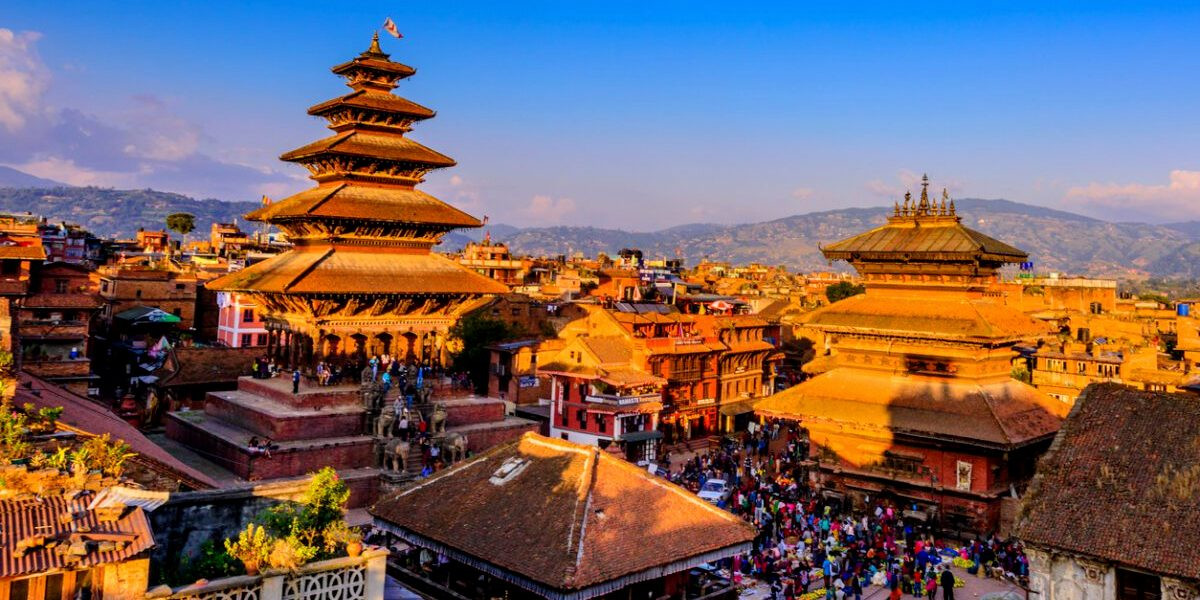
Key Destinations for Cultural Tours in Nepal
Kathmandu Valley: At the heart of Nepal's cultural tours is the Kathmandu Valley, which comprises three historic cities: Kathmandu, Patan, and Bhaktapur. Each city boasts its own unique charm and array of temples, palaces, and squares.
-
Kathmandu is home to the famous Durbar Square, Swayambhunath Stupa (the Monkey Temple), and the Pashupatinath Temple.
-
Patan, known as the city of artisans, offers Patan Durbar Square and the Patan Museum, which displays traditional Nepali crafts and art.
-
Bhaktapur, the most traditional and well-preserved of the trio, features intricate woodcarvings, pottery, and the renowned Nyatapola Temple.
Lumbini: Birthplace of Lord Buddha, Lumbini is a must-visit for those interested in the origins of Buddhism. This sacred site not only offers insights into the early life of Buddha but also houses monasteries built by different Buddhist nations, each showcasing unique architectural styles.
Pokhara: While mainly known for its natural beauty, Pokhara also offers cultural gems like the International Mountain Museum and the traditional bazaars and old-style homes in Old Pokhara. The Bindhyabasini Temple and the World Peace Pagoda are significant places for spiritual reflection and offer stunning views of the surrounding landscapes.
What to Expect on a Cultural Tour
-
Guided Sightseeing: Professional guides provide valuable insights into the history, architecture, and religious practices associated with each site. Their knowledge enhances the experience by deepening your understanding of Nepalese culture.
-
Festival Participation: Depending on the timing of your visit, you might have the opportunity to participate in local festivals such as Dashain, Tihar, or Holi, which are celebrated with much fervor and provide a colorful glimpse into Nepalese traditions.
-
Traditional Cuisine: Cultural tours often include opportunities to taste local dishes, which are integral to understanding any culture. Nepalese cuisine varies by region and combines flavors from Indian, Tibetan, and other Asian culinary traditions.
-
Art and Craft Workshops: In places like Patan and Bhaktapur, you can witness traditional crafts being made, such as pottery and Thangka paintings, and participate in workshops to learn these ancient skills firsthand.
Best Time for Cultural Tours: The best time to embark on cultural tours in Nepal is during the dry seasons, from October to November and again from February to April, when the weather is pleasant and conducive to walking tours and outdoor activities. Additionally, visiting during festival times can be particularly rewarding.
The Role of Cultural Tours in Conservation: Cultural tours play a significant role in preserving Nepal’s heritage. They help sustain local crafts and traditions by providing a market for artisan products and generate revenue for the maintenance of historic sites. By participating in these tours, visitors contribute to the local economy and help keep Nepalese culture vibrant and alive.
In essence, a cultural tour in Nepal offers more than just sightseeing—it’s an immersive experience that connects you deeply with the history, spirituality, and community of this diverse nation.
White-Water Rafting
White-water rafting in Nepal is an exhilarating adventure that attracts thrill-seekers from around the world. The country's unique topography, with the Himalayas feeding numerous fast-flowing rivers, creates ideal conditions for rafting. Here’s what you need to know if you’re considering this thrilling water sport in Nepal:
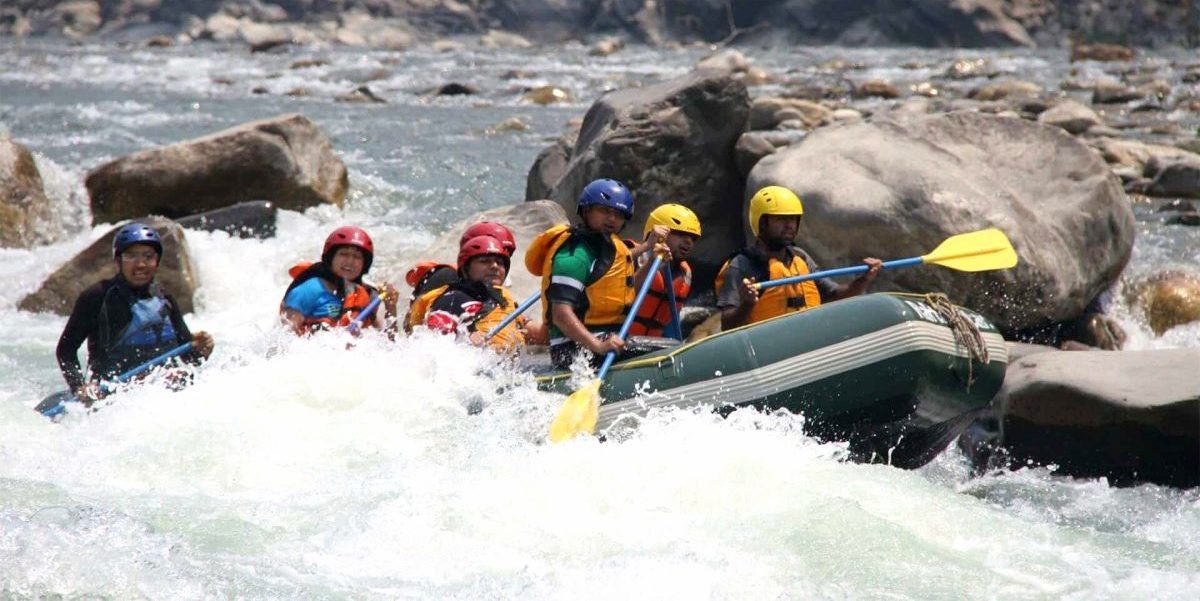
Key Rivers for White-Water Rafting
-
Trishuli River: Easily accessible from Kathmandu, Pokhara, and Chitwan, the Trishuli River is perfect for both beginners and seasoned rafters. It offers a range of rapids that can be navigated year-round, providing a good mix of excitement and scenic views.
-
Bhote Koshi River: Located near the Nepal-Tibet border, the Bhote Koshi is one of the steepest rivers available for rafting in Nepal. It’s ideal for those looking for a short, intense adventure. The river’s upper sections are famous for their challenging rapids and require previous rafting experience.
-
Sun Koshi River: Known as the "River of Gold," the Sun Koshi is perfect for a longer rafting expedition, often taking 7 to 9 days. This river journey offers a sequence of class III to class V rapids and passes through remote areas, providing a more immersive experience in Nepal’s natural beauty.
-
Kali Gandaki River: Named after the goddess Kali, this river combines exhilarating rapids with views of the Annapurna range. It is well-suited for those looking for a medium-length trip that combines physical challenge and spiritual significance.
What to Expect on a Rafting Trip
-
Safety Briefings: Before embarking, rafters receive comprehensive safety briefings. Guides explain how to use safety equipment, handle the raft, and respond during a rapid.
-
Experienced Guides: Guides are experienced and knowledgeable about river navigation techniques, ensuring a safe and enjoyable trip for rafters of all skill levels.
-
Scenic Campsites: Multi-day trips often include overnight stays at riverside campsites. These spots offer beautiful settings to relax after a day of rafting and enjoy the starlit skies.
-
Environmental Respect: Rafting companies are generally committed to environmental conservation, ensuring that their activities do not harm the river ecosystems.
Best Time for Rafting: The best times for white-water rafting in Nepal are during the spring (March to May) and autumn (September to early December). During these months, the weather is generally dry and warm, which is ideal for river sports. The water levels are also favorable after the monsoon season replenishes the rivers, making the rapids more exciting.
Preparing for Your Rafting Adventure
-
Physical Fitness: Rafting can be physically demanding, especially on longer routes or higher-class rapids. Basic fitness is recommended.
-
Gear and Clothing: Wear comfortable, quick-drying clothes and secure footwear. Helmets, life jackets, and paddles are typically provided by the rafting companies.
-
Respect for Nature: Rafters should follow the principles of Leave No Trace to minimize their impact on the natural environment.
White-water rafting in Nepal is not just an adventure sport; it's an opportunity to connect deeply with nature, challenge your limits, and experience the raw power of the Himalayan waters. Whether you’re a novice or a seasoned rafter, the rivers of Nepal offer an unforgettable journey through some of the most dramatic landscapes on Earth.
Paragliding in Pokhara
Paragliding in Pokhara is one of the most awe-inspiring adventures you can experience while in Nepal. Known for its stunning views of the Annapurna mountain range and the beautiful Phewa Lake, Pokhara provides the perfect backdrop for this thrilling activity. Here's what you need to know about paragliding in this picturesque city:
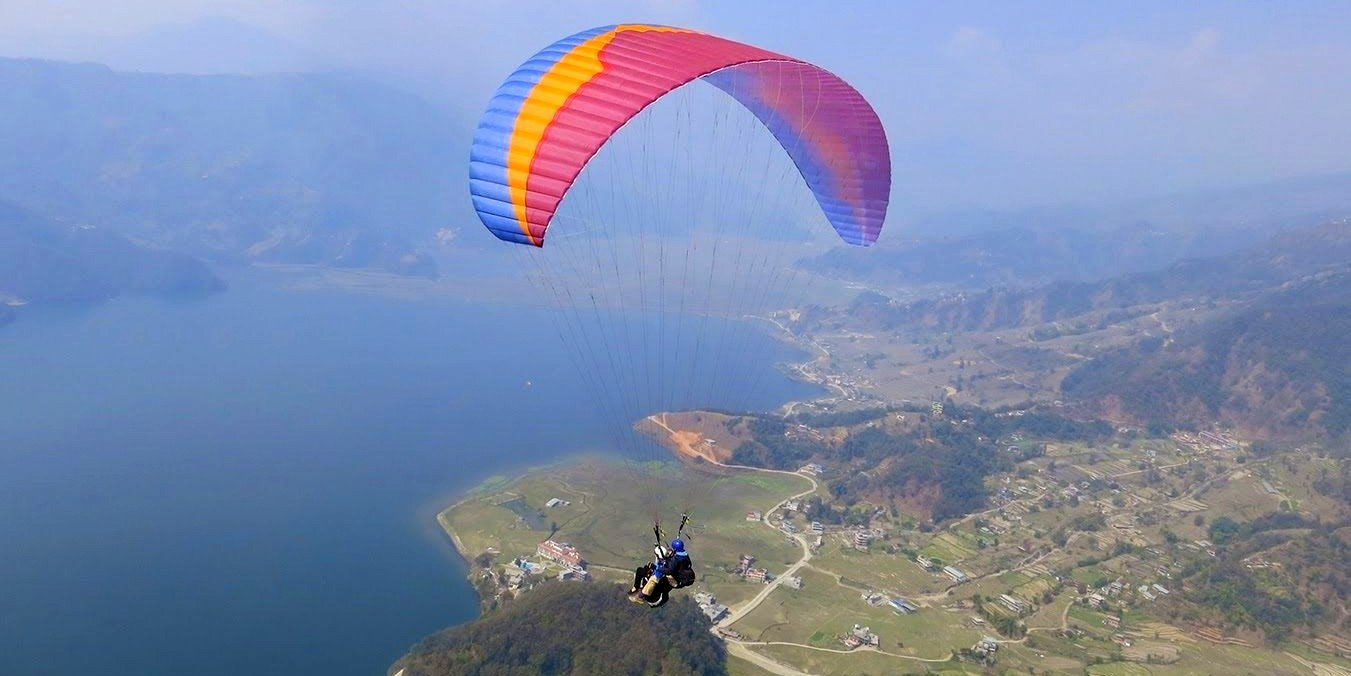
Ideal Location: Pokhara is considered one of the best paragliding destinations in the world. The combination of unique thermals, predictable weather patterns, and breathtaking scenery creates ideal conditions for paragliders. Flights typically launch from Sarangkot, a hilltop on the outskirts of Pokhara that stands at an elevation of about 1,600 meters. From here, you glide over lush forests, traditional villages, and the expansive Phewa Lake, with the Himalayas in the backdrop.
Paragliding Options
-
Tandem Flights: Most visitors choose tandem flights, where you're strapped in with an experienced pilot. This option is perfect for beginners and those who want to enjoy the ride without worrying about controlling the paraglider.
-
Solo Flights: For experienced paragliders, solo flights are also an option. You must have appropriate certification and experience to take on a solo flight in Pokhara.
-
Cross-Country Flights: Advanced pilots may opt for cross-country flights that explore wider areas and utilize thermal winds to extend flight time and distance.
What to Expect
-
Safety Briefings: Before taking off, you'll receive a safety briefing from your pilot covering basic paragliding protocols and emergency procedures.
-
Flight Duration: A standard tandem flight lasts about 30 minutes, depending on weather conditions and thermal activity. Longer flights can be arranged for those seeking a more extended experience.
-
Equipment: All necessary equipment is provided, including a harness, helmet, and paraglider. Make sure to wear comfortable clothing and sturdy shoes.
-
Professional Pilots: Paragliding companies in Pokhara employ skilled and experienced pilots who are certified and well-versed in local weather conditions, ensuring a safe and enjoyable flight.
Best Time for Paragliding: The best time for paragliding in Pokhara is during the dry seasons, from September to November and again from March to May. These months offer clear skies and optimal thermal currents. Morning flights are generally preferred for the best thermals and visibility.
Environmental and Safety Considerations: Paragliding in Pokhara is conducted with a strong emphasis on safety and environmental conservation. Pilots and companies are committed to preserving the natural beauty of the area while providing an exhilarating experience for visitors.
Why Paraglide in Pokhara: Paragliding here offers more than just the thrill of flight; it's an immersive experience that lets you see the world from a different perspective. Floating high above the ground, with panoramic views of some of the tallest mountains in the world, provides a profound sense of freedom and awe. This experience not only caters to adventure seekers but also to anyone wishing to experience the majestic beauty of Nepal in a truly unique way.
Whether you're an adrenaline junkie or someone looking for a new way to appreciate nature, paragliding in Pokhara is an activity that should definitely be on your itinerary.
Yoga Retreats
Yoga retreats in Nepal offer a unique blend of spiritual rejuvenation and natural beauty, making it an ideal destination for those seeking both inner peace and outdoor adventure. Nestled in the majestic Himalayas, Nepal provides the perfect backdrop for deepening your yoga practice. Here’s what you can expect from a yoga retreat in this serene and spiritual country:
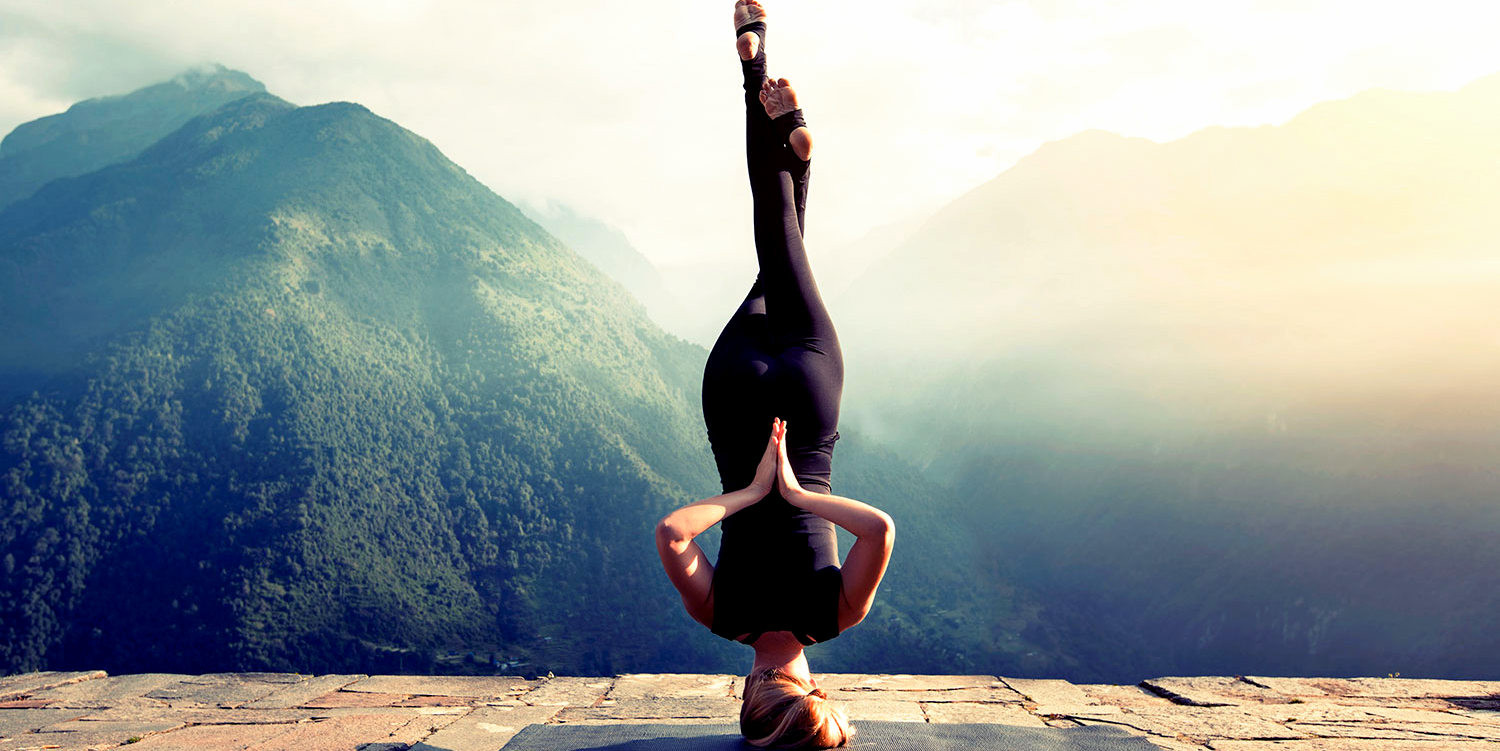
Ideal Locations for Yoga Retreats
-
Kathmandu Valley: Home to numerous temples and monasteries, the Kathmandu Valley is a cultural and spiritual hub, providing a tranquil setting for yoga and meditation. Retreats here often include guided cultural tours alongside daily yoga sessions.
-
Pokhara: Known for its stunning natural beauty, Pokhara is a favorite among yogis looking for a serene environment. Many retreats are located near the shores of Phewa Lake, offering breathtaking views of the Annapurna range as a backdrop for your practice.
-
Lumbini: As the birthplace of Buddha, Lumbini is one of the most revered spiritual sites in Nepal. Yoga retreats in this area typically focus on Buddhist teachings and meditation techniques, providing a profound spiritual experience.
What to Expect
-
Daily Yoga Sessions: Retreats usually offer twice-daily sessions, including practices like Hatha, Vinyasa, and Ashtanga yoga, tailored to suit a range of abilities from beginners to advanced practitioners.
-
Meditation and Pranayama: Alongside physical practices, most retreats emphasize meditation and breathing exercises (pranayama) to foster mental clarity and relaxation.
-
Accommodations: From luxurious resorts to eco-friendly lodges, accommodations are designed to enhance your connection with nature and provide a peaceful setting for reflection and growth.
-
Healthy Cuisine: Nutritious, locally sourced meals are a staple of yoga retreats, often included in the package. These meals are typically vegetarian or vegan, aligning with the yogic lifestyle.
-
Additional Workshops: Many retreats offer workshops on topics like yoga philosophy, Ayurveda, and holistic health practices to enrich your understanding and take your practice deeper.
-
Cultural Integration: Some retreats incorporate local cultural experiences such as temple visits, traditional music sessions, and even Nepali language lessons to give a deeper insight into the local way of life.
Best Time for Yoga Retreats: The best times to attend a yoga retreat in Nepal are during the spring (March to May) and autumn (September to November). These months offer mild weather, clear skies, and optimal conditions for both yoga and exploration of the surrounding areas.
Benefits of a Yoga Retreat in Nepal: Participating in a yoga retreat in Nepal not only helps improve physical flexibility, strength, and posture but also offers mental health benefits like reduced stress, better concentration, and enhanced self-awareness. The serene environments further amplify these benefits, encouraging a deeper connection with oneself and the natural world.
Yoga retreats in Nepal cater to a wide range of interests and spiritual pursuits, offering a comprehensive approach to wellness that combines the ancient wisdom of yoga with the unparalleled beauty of the Himalayas. Whether you are looking to deepen your yoga practice, explore meditation, or simply need a peaceful escape, a yoga retreat in Nepal provides an enriching and transformative experience.
Mountain Biking
Mountain biking in Nepal is an exhilarating experience that offers not only challenging terrains but also some of the most spectacular landscapes in the world. Here’s an overview of what you can expect if you choose to explore Nepal on two wheels:
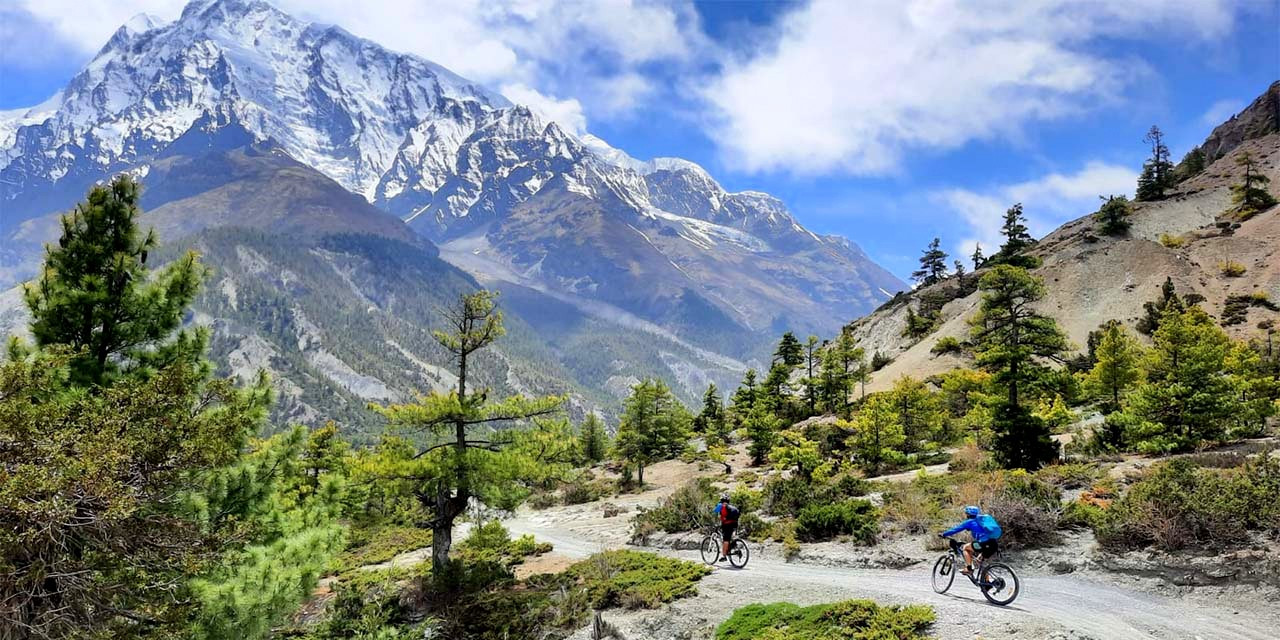
Popular Mountain Biking Trails in Nepal
-
Kathmandu Valley: This area offers a variety of trails that cater to both beginners and experienced bikers. The routes around the valley take you through ancient towns, sacred sites, and lush forests, with magnificent views of the Himalayan backdrop.
-
Annapurna Circuit: For a more challenging ride, the Annapurna Circuit provides an adventurous route with diverse terrains, from lowland villages to high mountain passes. This trail is also popular for its breathtaking panoramic views of the Annapurna range.
-
Upper Mustang: Known for its arid landscape and Tibetan culture, Upper Mustang is a remote area that offers a unique mountain biking experience. The trail goes through barren landscapes, ancient monasteries, and unique geological formations.
What to Expect on Your Ride
-
Varied Terrain: Nepal’s mountain biking trails include everything from smooth roads to rough, rocky paths. You’ll need to be prepared for quick changes in terrain and altitude.
-
Scenic Views: One of the biggest draws of mountain biking in Nepal is the stunning natural scenery. Whether it’s lush green forests, arid deserts, or snowy mountain peaks, every trail offers something unique.
-
Cultural Encounters: Biking through rural villages and towns provides an opportunity to interact with the local Nepalese communities and experience their hospitality and rich cultural heritage.
Planning Your Trip
-
Best Time to Visit: The ideal times for mountain biking in Nepal are during the spring (March to May) and autumn (October to November) when the weather is clear and dry, making it safer to ride on the trails.
-
Gear and Preparation: It’s important to have the right gear, including a good mountain bike, helmet, gloves, and appropriate clothing. Most trails require a good level of physical fitness and biking skills, especially the more challenging routes.
-
Guided Tours: For those unfamiliar with the terrain, guided tours are available and recommended. Local guides not only know the best routes but also provide insights into the local culture and history.
Mountain biking in Nepal offers an adventurous way to explore the diverse landscapes and cultures of the country. Whether you are looking for a leisurely ride around the Kathmandu Valley or an epic journey across high-altitude passes, Nepal’s trails provide a thrilling and memorable experience.
Bird Watching
Bird watching in Nepal is a rewarding experience given the country’s exceptional diversity of avian species, thanks to its varied ecosystems ranging from the lowland jungles to the high Himalayas. Here’s a detailed guide for enthusiasts looking to explore the rich birdlife of Nepal.
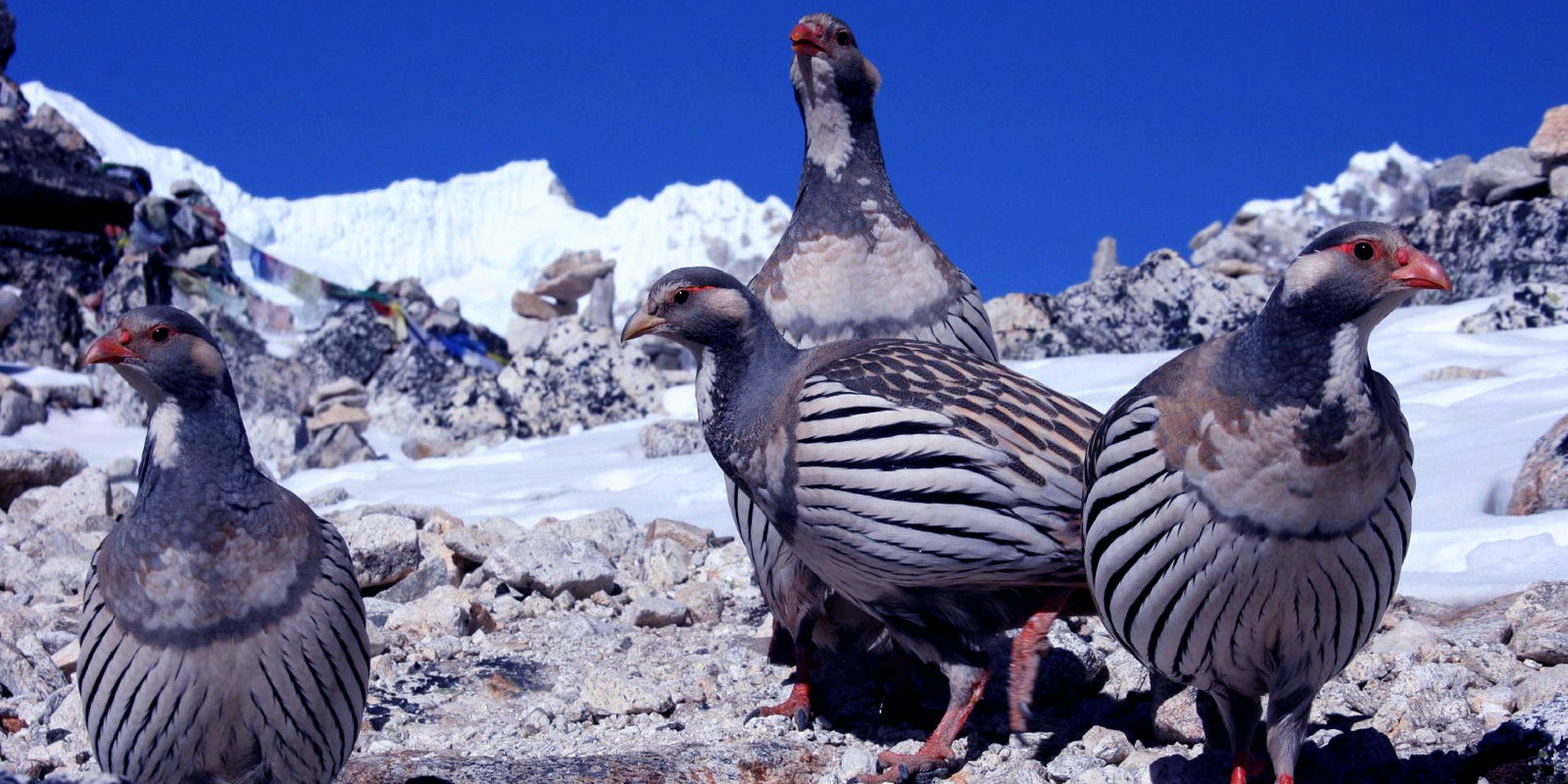
Prime Bird Watching Locations
-
Koshi Tappu Wildlife Reserve: Known as a bird watcher's paradise, Koshi Tappu is home to over 500 species of birds, making it one of the best spots for bird watching in Nepal. It’s particularly famous for its waterfowl and waders, as well as the rare Bengal florican and the Sarus crane.
-
Chitwan National Park: This UNESCO World Heritage Site is another excellent location for bird enthusiasts. It hosts more than 550 species of birds, including several species of peacocks, woodpeckers, hornbills, and the endangered Bengal florican.
-
Shivapuri Nagarjun National Park: Located near Kathmandu, this park offers convenient access to a variety of Himalayan birds. It's a good spot to see species like the spotted forktail, the Himalayan black-lored tit, and different varieties of eagles.
-
Bardia National Park: In the western Terai, this park is a bit more remote and less visited, providing a tranquil environment for bird watching. It is known for its population of raptors and other forest birds.
What to Expect
-
Guided Tours: Local guides who are knowledgeable about native bird species and their habits can enhance your bird watching experience. They know the best times and places to observe different species.
-
Varied Species: From migratory waterfowl to high-altitude specialists, Nepal offers a wide range of habitats that are home to a diverse array of birds. It’s possible to spot everything from common local species to rare and exotic birds.
-
Seasonal Variations: While bird watching can be rewarding year-round, the best time is from March to May when birds are most active and many species are nesting. Additionally, the autumn months from September to November are great for observing migratory birds.
Essential Tips for Bird Watching
-
Early Morning Start: Birds are most active during the early morning hours, so it's advisable to start your observations at dawn.
-
Appropriate Gear: A good pair of binoculars, a bird guide book specific to Nepal, and suitable clothing for varied weather conditions are essential.
-
Respect Nature: Maintain a safe distance from wildlife, keep noise to a minimum, and ensure you do not disturb the natural habitat of the birds.
Bird watching in Nepal offers not just the chance to see rare and beautiful birds but also to enjoy the country’s stunning natural landscapes. Whether you're an experienced ornithologist or a casual bird enthusiast, the avian diversity of Nepal provides a fascinating and fulfilling outdoor adventure.
Nepal Cuisine Tours
A cuisine tour in Nepal is a delightful way to dive deep into the rich culinary heritage of this culturally diverse country. Nepalese cuisine is a tantalizing blend of flavors influenced by both its geographical neighbors, India and Tibet, and by the variety of ethnic groups within its own borders. Here's what you can expect when you explore the flavorful world of Nepalese food:
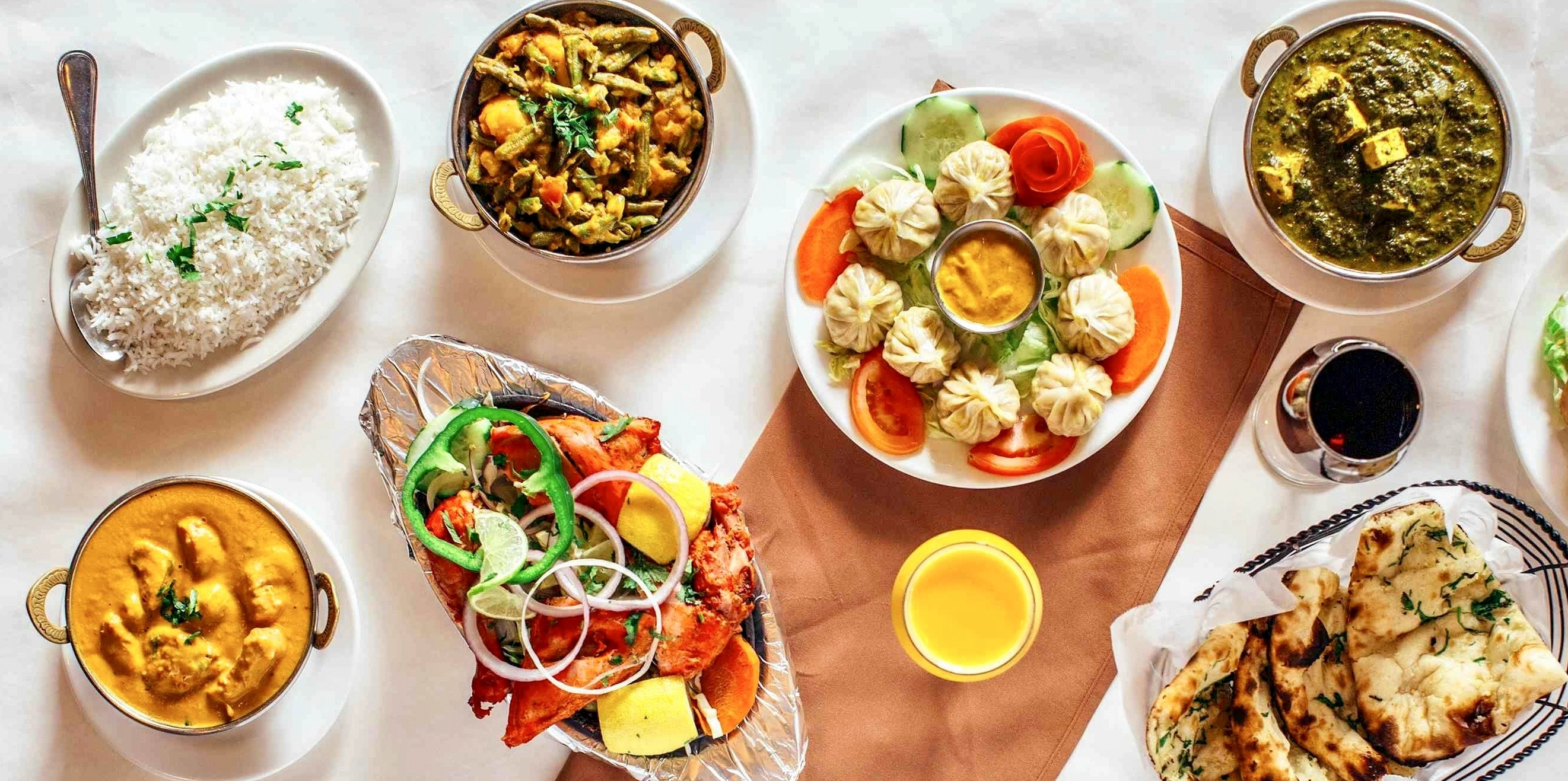
Key Highlights of Nepal Cuisine Tours
-
Kathmandu Valley: As the cultural and political heart of Nepal, Kathmandu is a melting pot of flavors. A cuisine tour here might start in the bustling markets where you can sample local street foods like momos (Tibetan-style dumplings), chaat (a spicy, tangy snack), and samosas. Upscale Nepali restaurants offer refined versions of traditional dishes such as dal bhat (lentils and rice), gundruk (fermented leafy greens), and yomari (sweet rice dumplings).
-
Bhaktapur and Patan: These ancient cities are known for their traditional Newari culture, which includes a distinct culinary style. Tours here often feature Newari platters that consist of various meats, lentils, and pickles. Bara (savory lentil pancakes) and juju dhau (king yogurt) are must-try dishes.
-
Pokhara: Set against the backdrop of the Annapurna range, Pokhara’s cuisine tours offer a blend of local dishes with a scenic view. Try the Thakali thali, a set meal that originated from the Thakali people of the Thak Khola region, known for its balanced spices and nutrition.
What to Expect on a Cuisine Tour
-
Market Visits: Tours typically include visits to local markets to explore the fresh produce and spices that are staples in Nepalese cooking. These visits provide insight into the everyday life and diet of Nepali people.
-
Cooking Classes: Many tours offer cooking classes where you can learn to prepare traditional dishes. These classes are hands-on and provide a deeper understanding of the techniques and flavors of Nepalese cuisine.
-
Home Dinners: Some tours arrange dinners in local homes, offering a unique opportunity to experience authentic Nepalese hospitality and family-style meals.
-
Restaurant Dining: To showcase the range of Nepalese cuisine, tours often include meals at both traditional and modern Nepali restaurants, giving participants a broad taste of the country's culinary diversity.
Best Time for Cuisine Tours: Nepal’s cuisine tours can be enjoyed year-round, but the best times are during the spring (March to May) and autumn (September to November) when the weather is pleasant, making travel between different dining locations more comfortable.
Cultural Insights: Cuisine tours in Nepal also offer valuable cultural insights, as food is deeply intertwined with religious and social practices. For instance, during Tihar, Nepal's festival of lights, you might learn about and taste special festival foods such as sel roti, a sweet rice bread.
Participating in a cuisine tour in Nepal not only satisfies the palate but also enriches your understanding of the nation’s cultural fabric. Each meal tells a story of the land, the people, and their traditions, making it a must-do activity for any culinary enthusiast visiting Nepal.
Helicopter Tours
Helicopter tours in Nepal offer an extraordinary way to experience the breathtaking majesty of the Himalayas without the need for strenuous trekking. These tours provide a unique aerial perspective on some of the world’s highest peaks, including Mount Everest, making them a popular choice for those seeking a once-in-a-lifetime adventure.
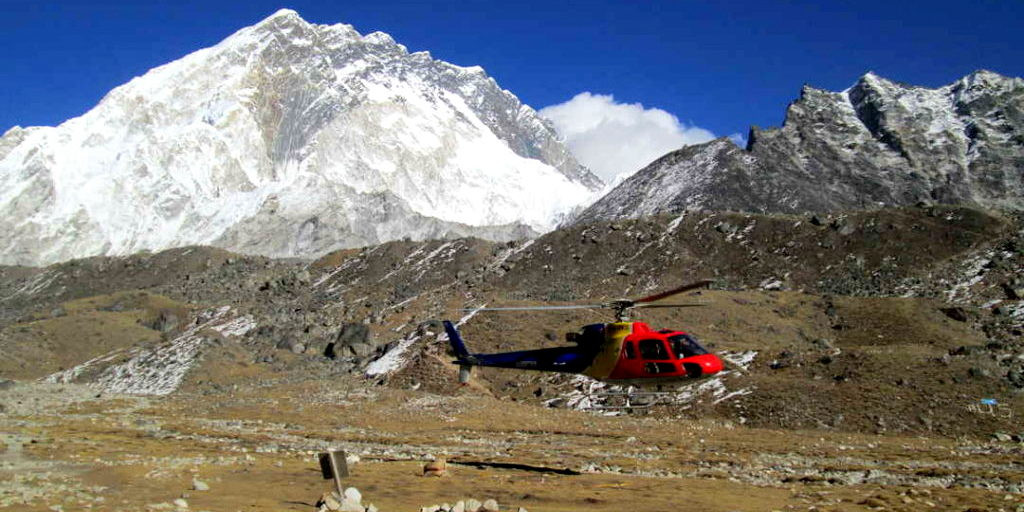
Popular Helicopter Tours in Nepal
-
Everest Base Camp Helicopter Tour: The most famous helicopter tour in Nepal, this flight takes you to the base camp of Mount Everest, the highest peak in the world. The tour usually includes a stop at Kala Patthar, a viewpoint that offers unrivaled views of Everest and the surrounding peaks. Some tours also include breakfast at a hotel with panoramic views of the Himalayan range.
-
Annapurna Base Camp Helicopter Tour: This tour offers a dramatic look at the Annapurna region, which is less frequented by helicopters compared to Everest. The flight covers the beautiful Annapurna Sanctuary, a high glacial basin surrounded by a ring of impressive peaks, including Annapurna I, a peak over 8,000 meters high.
-
Langtang Valley Helicopter Tour: A shorter tour that is ideal for those with limited time. The flight heads north from Kathmandu towards the beautiful Langtang Valley, offering views of dramatic ridges and sprawling Tibetan highlands. The tour typically includes a landing in Kyanjin Gompa, a small Tibetan village, where visitors can enjoy breakfast against the backdrop of towering mountains.
What to Expect on a Helicopter Tour
-
Duration: Tours can last anywhere from a few hours to a full day, depending on the destination and the number of stops included.
-
Capacity: Most helicopters can accommodate 4 to 6 passengers, making this a somewhat exclusive experience. Weight restrictions may apply, and often the helicopter may only land briefly due to altitude and weather conditions.
-
Pilot and Safety: Pilots for these tours are highly experienced with the unique terrain and weather patterns of the Himalayas. Comprehensive safety briefings are provided to all passengers before departure.
-
Scenic Stops: Weather permitting, most tours offer at least one landing at a scenic location or a viewpoint where passengers can take photos and enjoy the landscape without the windows of the aircraft.
-
Cost: Helicopter tours are a premium experience and are priced accordingly. They offer significant value given the unique access they provide to some of the most remote and stunning places on earth.
Best Time for Helicopter Tours: The best months for helicopter tours in Nepal are from October to November and from March to May when the weather is generally clear and stable, providing the best visibility and safer flying conditions.
Environmental Considerations: While helicopter tours provide unparalleled access to Nepal’s natural beauty, they also come with a carbon footprint. Tour operators typically take measures to offset this impact through various sustainability initiatives. Passengers can also contribute by choosing operators committed to environmental stewardship.
Helicopter tours in Nepal not only highlight the spectacular scenery of the Himalayas but also bring a sense of adventure and luxury to your travel experience. These tours are perfect for those looking to maximize their time and witness the grandeur of the mountains in comfort and style.
Hot Air Balloon Rides in Pokhara
Hot air balloon rides in Pokhara offer a serene and picturesque way to experience the beauty of Nepal from the sky. Floating gently above the scenic landscapes, riders get a panoramic view of the Himalayan mountains, the verdant valleys, and the shimmering Phewa Lake. Here’s what you can expect when you embark on this magical adventure in the skies of Pokhara.
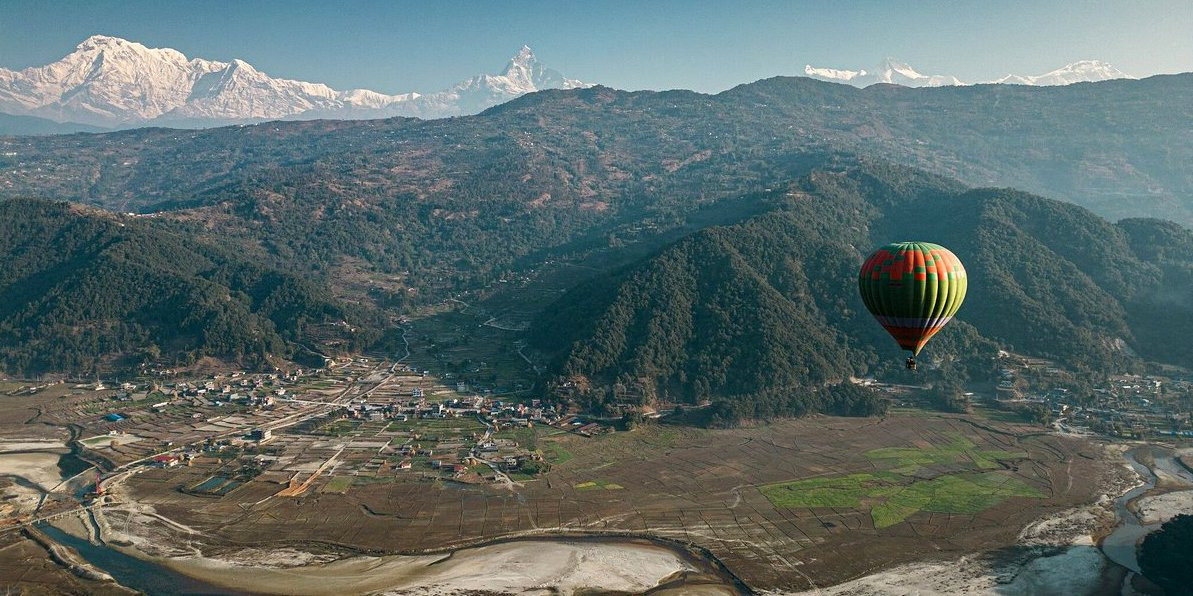
Overview of Hot Air Balloon Rides in Pokhara
Pokhara, renowned for its natural beauty and proximity to the Annapurna range, provides an ideal setting for hot air ballooning. This activity offers a tranquil alternative to the more adrenaline-pumping adventures like paragliding or ultralight flights also available in the area.
What to Expect
-
Flight Time and Conditions: Hot air balloon rides typically take place early in the morning at sunrise when the winds are calmest and the air is stable. This timing ensures the safest and most enjoyable experience, with spectacular views of the sunrise illuminating the peaks of the Annapurna and Dhaulagiri ranges.
-
Duration: The entire experience usually lasts about 1 to 2 hours, with the flight itself taking around 40 to 60 minutes depending on weather conditions.
-
Preparation and Safety: Passengers receive a briefing before takeoff, covering safety procedures and what to expect during the flight. Safety is a top priority, and the balloons are operated by certified and experienced pilots.
-
Views and Photography: As you rise above Pokhara, the breathtaking views unfold. The contrast between the lush greenery of the valley and the pristine white peaks of the Himalayas creates a perfect backdrop for awe-inspiring photos.
-
Capacity: Hot air balloons can typically accommodate around 4 to 12 people per ride, making this a more intimate and peaceful experience compared to larger group tours.
Best Time for Hot Air Balloon Rides: The best time for hot air ballooning in Pokhara is from September to early June, with October to April being particularly ideal due to the clearer skies and more predictable weather patterns. This period avoids the monsoon season when ballooning is generally not offered due to safety concerns with unpredictable weather.
Booking and Costs
-
Booking in Advance: It is advisable to book your hot air balloon ride in advance, especially during the peak tourist seasons, to ensure availability.
-
Cost: Prices for hot air balloon rides vary depending on the provider and the length of the flight, but they generally offer good value considering the unique experience and spectacular views they provide.
Environmental and Cultural Sensitivity: Hot air ballooning in Pokhara is conducted with a deep respect for the local environment and cultural norms. Operators are conscious of minimizing their impact on the natural surroundings and local communities, ensuring that the beauty of Pokhara can be enjoyed sustainably.
A hot air balloon ride in Pokhara is not just a flight; it's an enchanting experience that allows you to appreciate the grandeur of nature and the tranquility of soaring through the sky. It’s perfect for those seeking a peaceful yet unforgettable adventure in one of the most beautiful settings in Nepal.
Tips for Things to do Besides trekking in Nepal
Exploring Nepal beyond its renowned trekking trails offers a rich tapestry of activities that cater to a wide range of interests, from adrenaline-pumping adventures to serene cultural immersions. Here are some essential tips to help you make the most out of these diverse experiences:
Plan According to the Season
-
Wildlife Safaris: The best time for wildlife viewing in national parks like Chitwan and Bardia is during the dry seasons from October to December and February to April when animals are more likely to be seen near water sources.
-
Cultural Tours: These can be enjoyed year-round, but visiting during local festivals (like Dashain in autumn or Holi in spring) can provide deeper insights and more festive experiences.
-
White-Water Rafting: Opt for the post-monsoon months (September to early December) when the rivers are full and the rapids are most exciting.
-
Paragliding, Hot Air Ballooning: The best visibility and stable weather conditions are typically from September to November and again from March to May.
Engage with Local Culture
-
Joining cuisine tours and cooking classes can provide not just a taste but also an understanding of Nepalese culture through its flavors.
-
Participate in traditional and community activities to connect deeper with the local way of life. This could be anything from a yoga session at a local ashram to attending a village festival.
Respect Wildlife and Natural Habitats
-
When on safaris or bird-watching excursions, maintain a respectful distance from animals. Use binoculars and zoom lenses to view and photograph wildlife without intruding.
-
Follow guidelines and instructions from guides to minimize your impact on natural environments.
Choose Eco-friendly Options
-
Support eco-conscious tour operators who prioritize sustainability in their practices, whether it's through wildlife tours, cultural excursions, or adventure sports.
-
Consider environmentally friendly travel practices such as reducing plastic use, recycling, and ensuring that you leave no trace.
Prepare Appropriately for Each Activity
-
For activities like mountain biking or white-water rafting, ensure you have the appropriate gear and physical preparation. Safety gear is a must, and fitness levels should match the activity's demands.
-
For cultural tours and city walks, comfortable walking shoes and culturally appropriate clothing are recommended.
Explore at Your Pace
- Don’t rush from one activity to another; instead, choose a few that genuinely interest you and spend time engaging deeply with each experience. This could mean spending a few days in one location or focusing on activities that offer rest as well as excitement.
Book with Reliable Providers
- Ensure that your tours and activities are booked through reputable providers. This not only guarantees your safety but also ensures high-quality experiences. Reliable providers will have knowledgeable guides who can enhance your understanding of each activity.
By following these tips, you can explore the wealth of activities Nepal has to offer beyond trekking and enjoy a more comprehensive and fulfilling travel experience in this diverse and stunning country.
Nepal offers a treasure trove of activities beyond its famous treks, catering to all types of travelers. From the thrilling adventures of white-water rafting and paragliding to the enriching experiences of wildlife safaris and cultural tours, Nepal provides diverse ways to connect with its stunning natural beauty and vibrant culture. Whether you seek adrenaline, tranquility, or cultural immersion, the array of options available ensures a dynamic and fulfilling journey. Engaging in these activities not only enriches your travel experience but also supports local communities and conservation efforts, making your visit impactful and memorable.
FAQs for Things to do Besides trekking in Nepal
Q: What are some popular activities in Nepal besides trekking?
A: Beyond trekking, visitors can enjoy cultural tours of historical cities, wildlife safaris in national parks, white-water rafting on Nepal’s rivers, paragliding in Pokhara, participating in yoga retreats, mountain biking through diverse terrains, bird watching, experiencing local cuisine through food tours, and taking scenic helicopter tours over the Himalayas.
Q: Is Nepal good for wildlife safaris?
A: Yes, Nepal is excellent for wildlife safaris, especially in Chitwan National Park and Bardia National Park, where you can see a variety of wildlife including tigers, rhinoceroses, and elephants, as well as hundreds of bird species.
Q: Can I go paragliding in Nepal? Where is the best place?
A: Paragliding is a popular activity in Nepal, especially in Pokhara, which is known for its spectacular views of the Annapurna range and its reliable thermals that provide ideal flying conditions.
Q: Are there opportunities for cultural immersion?
A: Absolutely. Nepal's rich cultural heritage can be explored through visits to temples, monasteries, and historical sites in cities like Kathmandu, Patan, and Bhaktapur. Cultural tours often include participation in local festivals and traditional ceremonies.
Q: What should I know before going on a white-water rafting trip in Nepal?
A: It’s important to choose a reputable company with experienced guides. The best times for rafting are usually from September to early December and from March to May when the rivers are full after the monsoon but not too wild. Safety equipment and briefings are provided to ensure a secure and enjoyable experience.
Q: What kinds of yoga retreats are available in Nepal?
A: Nepal offers a variety of yoga retreats, ranging from weekend retreats to extended stays, in locations that include the peaceful Kathmandu Valley and the serene settings of Pokhara. These retreats cater to all levels and often combine yoga with meditation practices.
Q: When is the best time to visit Nepal for activities other than trekking?
A: The best time for most activities is during the dry seasons, from October to December and from February to April. These months provide favorable weather for cultural tours, wildlife viewing, and aerial sports like paragliding and hot air ballooning.
Q: How can I respect local customs and traditions during my visit?
A: Visitors should dress modestly, especially when visiting religious sites, and always ask for permission before taking photographs of people. It's also good practice to learn a few basic phrases in Nepali to show respect towards local communities.
Q: What are the options for cuisine tours in Nepal?
A: Cuisine tours in Nepal often involve visiting local markets, participating in cooking classes, and dining at traditional Nepali restaurants. These tours are an excellent way to explore the diverse flavors of Nepali cuisine, from street food to gourmet dishes.
Q: Are there family-friendly activities in Nepal?
A: Yes, Nepal offers many family-friendly activities including wildlife safaris, cultural tours, boat rides on Phewa Lake, and educational visits to museums and conservation centers.
For the Nepal tour, please click here.
If you are looking for different kinds of Nepal Tours or Trekking Packages, feel free to contact us.
